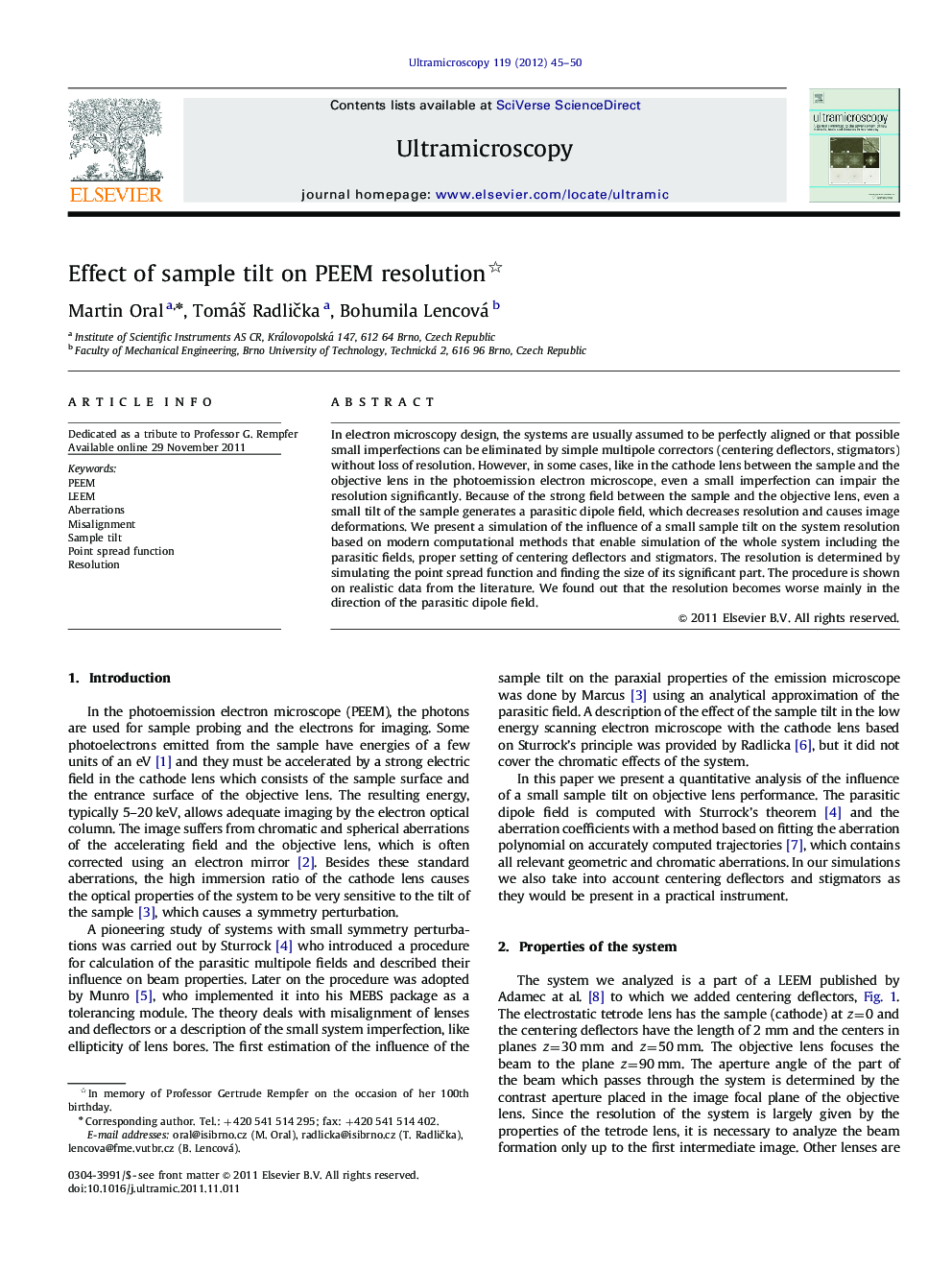| Article ID | Journal | Published Year | Pages | File Type |
|---|---|---|---|---|
| 1677502 | Ultramicroscopy | 2012 | 6 Pages |
In electron microscopy design, the systems are usually assumed to be perfectly aligned or that possible small imperfections can be eliminated by simple multipole correctors (centering deflectors, stigmators) without loss of resolution. However, in some cases, like in the cathode lens between the sample and the objective lens in the photoemission electron microscope, even a small imperfection can impair the resolution significantly. Because of the strong field between the sample and the objective lens, even a small tilt of the sample generates a parasitic dipole field, which decreases resolution and causes image deformations. We present a simulation of the influence of a small sample tilt on the system resolution based on modern computational methods that enable simulation of the whole system including the parasitic fields, proper setting of centering deflectors and stigmators. The resolution is determined by simulating the point spread function and finding the size of its significant part. The procedure is shown on realistic data from the literature. We found out that the resolution becomes worse mainly in the direction of the parasitic dipole field.
► We calculate the parasitic dipole resulting from a sample tilt in a PEEM or LEEM. ► In the perturbed system we determine trajectories and aberration coefficients. ► We simulate point spread functions under realistic conditions. ► We find resolution by computing the size of the PSFs for 50% of the current.
